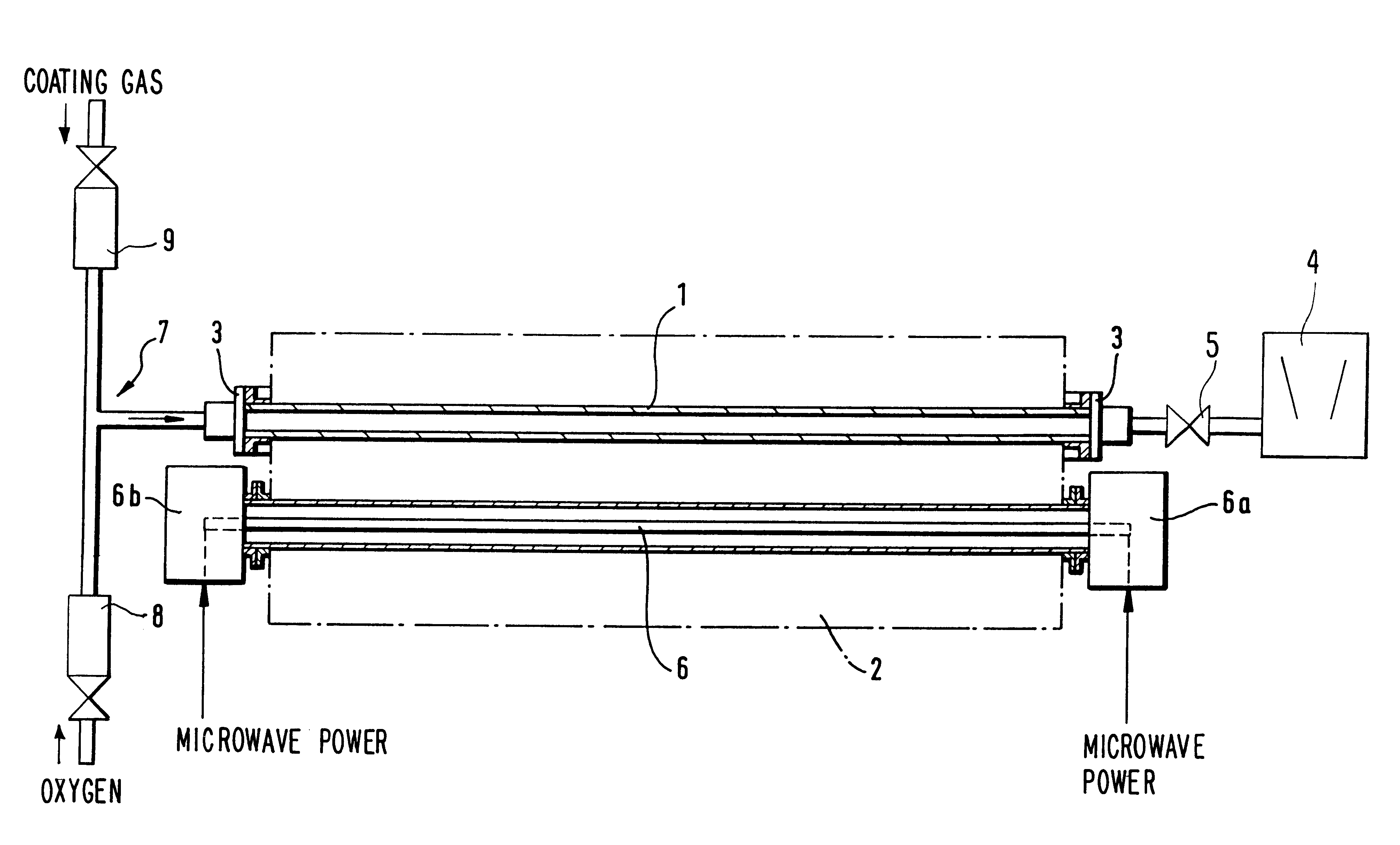Method of making a hollow, interiorly coated glass body and a glass tube as a semi-finished product for forming the glass body
a technology of glass tubes and hollows, which is applied in the direction of applications, chemical coatings, manufacturing tools, etc., can solve the problems of limited optical quality, high cost of glass tubes, and less suitable for mass production
- Summary
- Abstract
- Description
- Claims
- Application Information
AI Technical Summary
Benefits of technology
Problems solved by technology
Method used
Image
Examples
Embodiment Construction
Four samples with coating thicknesses of 0.5 nm, 1 nm, 5 nm and 50 nm are prepared by variation of the coating time with the apparatus shown in the drawing. Ampoules are formed as glass bodies from the coated semifinished glass tubes. Both the unfinished glass tube samples and the finished ampoules, including an uncoated sample, were tested with the help of atomic absorption spectroscopy for limiting values according to ISO 4802, Part II, after autoclaving with steam.
The results for the Na leach out after one hour are shown in Table II hereinbelow, for the tubing in column 2 and for the ampoules in column 4.
Also the workability or formability of the ampoules from the crude or unfinished tube samples was evaluated qualitatively. These evaluations are also shown in Table II in column 3 for the respective coating thickness. The results show that the glass tube with a coating thickness of 50 nm is not workable or formable and the glass tube with a coating thickness of 5 nm has poor work...
PUM
| Property | Measurement | Unit |
|---|---|---|
| Thickness | aaaaa | aaaaa |
| Thickness | aaaaa | aaaaa |
| Thickness | aaaaa | aaaaa |
Abstract
Description
Claims
Application Information
 Login to View More
Login to View More - R&D
- Intellectual Property
- Life Sciences
- Materials
- Tech Scout
- Unparalleled Data Quality
- Higher Quality Content
- 60% Fewer Hallucinations
Browse by: Latest US Patents, China's latest patents, Technical Efficacy Thesaurus, Application Domain, Technology Topic, Popular Technical Reports.
© 2025 PatSnap. All rights reserved.Legal|Privacy policy|Modern Slavery Act Transparency Statement|Sitemap|About US| Contact US: help@patsnap.com


